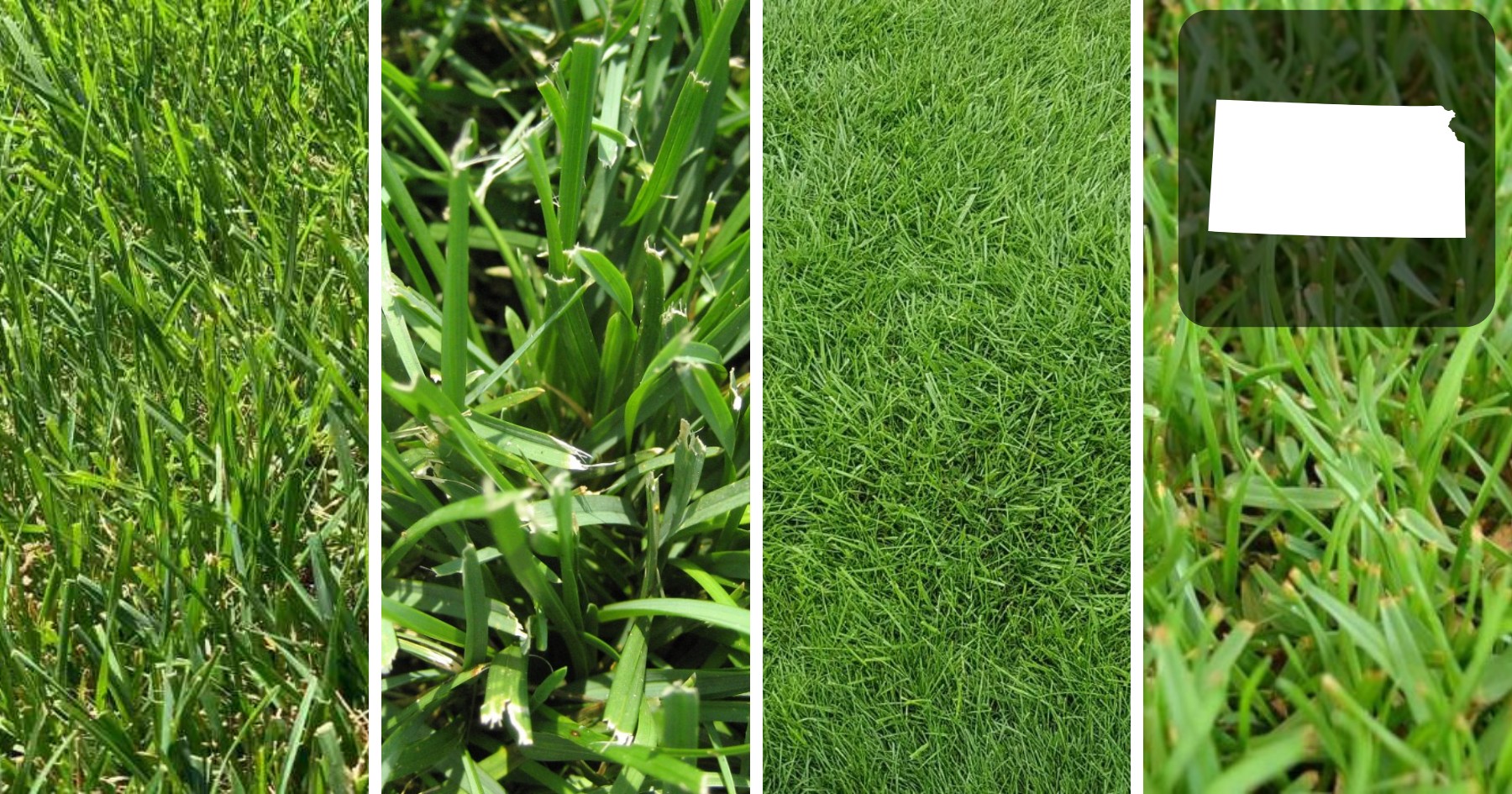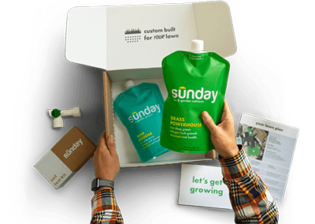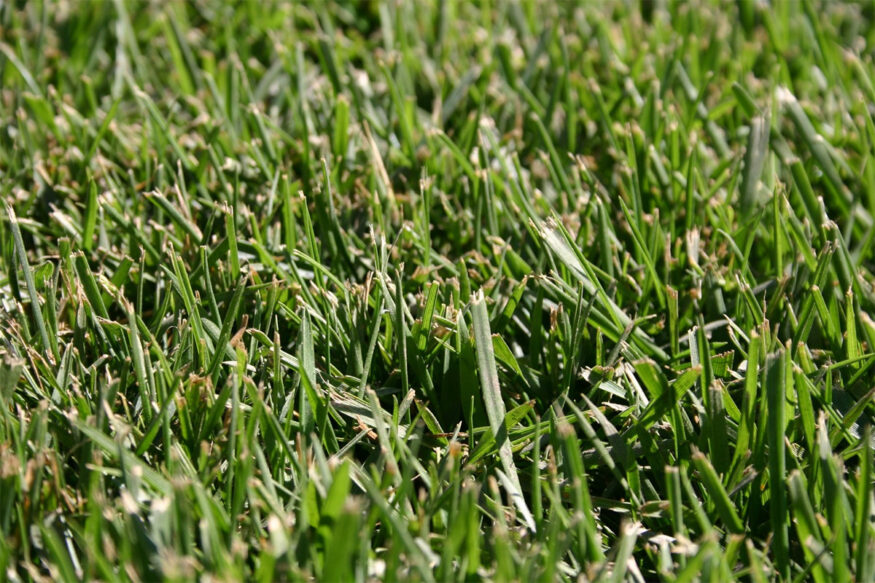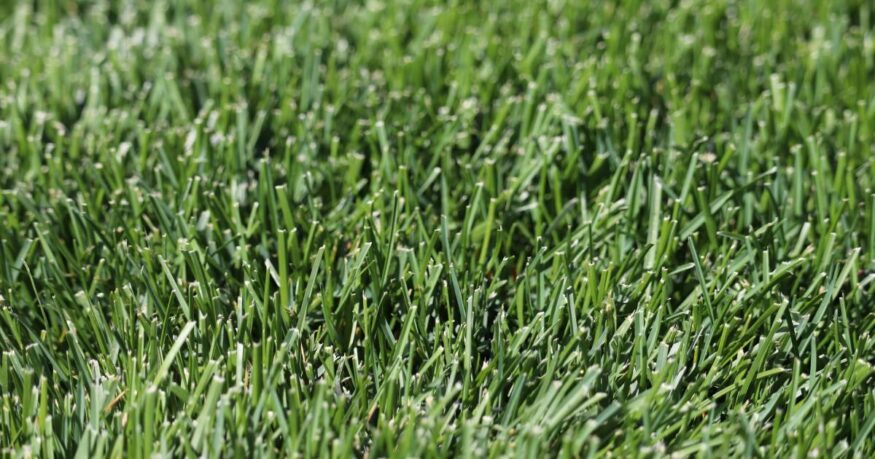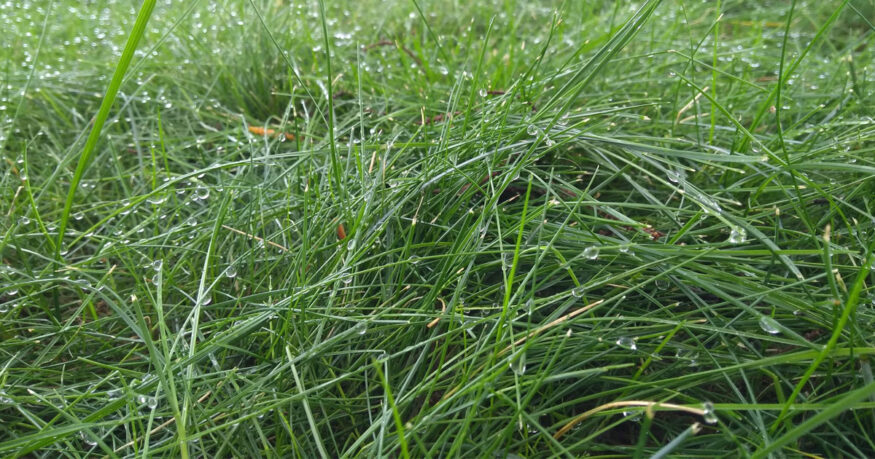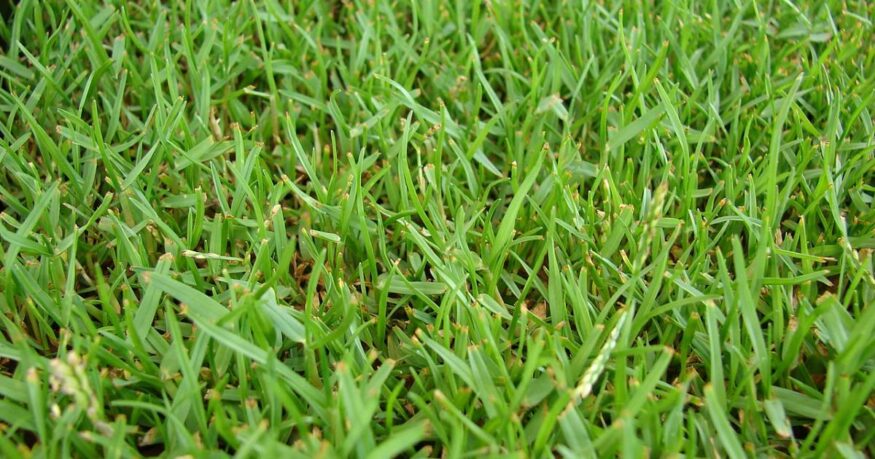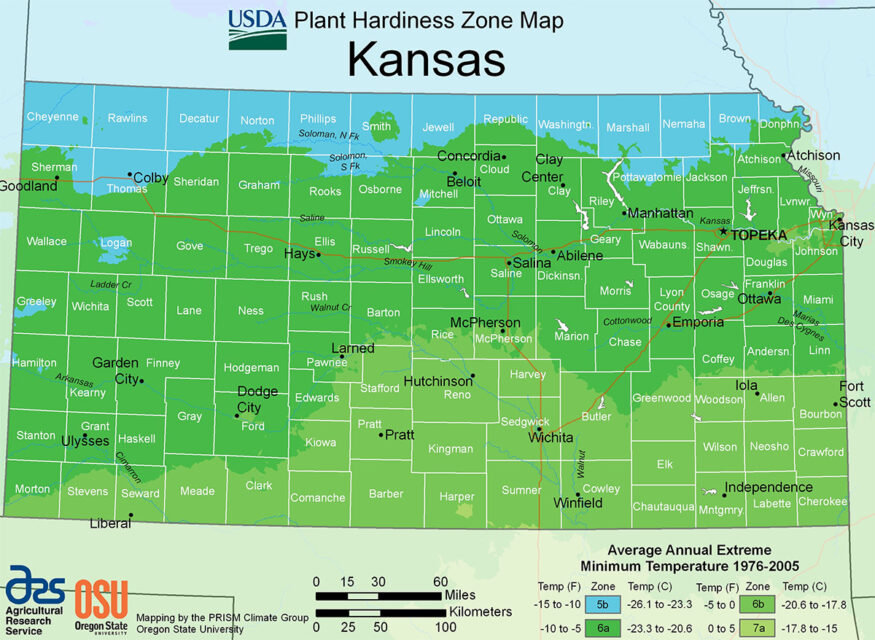As a Kansas resident looking to grow a lush and healthy lawn, you’re in the right place. So, what’s the best grass seed for Kansas? The short answer is Tall Fescue – Turf Type, but hang on, because we’re about to dive into all the details and explore other options for you.
Growing a lawn in Kansas can be challenging due to the state’s extreme weather conditions, ranging from scorching summers to frigid winters. Plus, there’s the added nuisance of pests that can damage your grass. But don’t worry, we’re here to help you with our top picks for the best grass seed options that can handle all of Kansas’ unique challenges.
[ez-toc]
Looking for the best grass seed for your region?
Our smart lawn plans are designed to work perfectly with your local soil and climate conditions, without any of the toxic stuff.
Use the code EHG20 for an instant $20 discount!
- Personalized lawn care: Custom lawn plans based on soil analysis, climate data, and your specific lawn needs.
- Convenience with a conscience: Products that are not only easy to use but also safe for you, your pets, and the planet.
- Science-backed formulas: Bio-based formulas contain effective, natural ingredients like seaweed, molasses, and iron.
- Expert support: Get one-on-one guidance from a real person and rest easy with Sunday's satisfaction guarantee.
Tall Fescue
| Also Known As | Lolium arundinaceum (formerly Festuca arundinacea) |
| Type of Grass | Cool season perennial |
| Optimal Zones | Northern through transition zones |
| Root Structure | Deep |
| Winter Hardiness | Excellent |
| Shade Tolerance | High |
| Water Requirements | Medium to High |
| Drought Tolerance | Excellent |
| Self Repair Capacity | Limited |
| Overall Maintenance Requirements | Low |
Why Tall fescue is The Most Popular Choice For Kansas
Are you searching for the perfect grass type for your Kansas lawn? Look no further than Tall Fescue – Turf Type! This grass is an excellent choice for Kansas lawns because it can withstand heat and drought, resist wear and high temperatures, and develop a deep root system. Plus, it requires less fertilizer and mowing compared to other grass types.
While Tall Fescue is an excellent choice for Kansas lawns, keep in mind that it thrives in sunny or partially shaded areas. In warmer regions, bermudagrass may invade your lawn, weakening your Tall Fescue’s growth. Additionally, this grass type can be susceptible to diseases like brown patch and leaf spot, especially in humid conditions. To prevent clumps from forming, remember to mow regularly.
To maintain a healthy Tall Fescue lawn, follow these basic care instructions:
- Mow at a height of 3 to 4 inches
- Water deeply but infrequently
- Fertilize in spring and fall
- Aerate once a year
- Overseed in the fall
By following these simple care instructions, you can keep your Tall Fescue – Turf Type lawn looking gorgeous year-round.
If you’re seeking a grass type that’s perfect for your Kansas lawn, Tall Fescue might be your answer. Its heat and drought tolerance, resistance to wear and high temperatures, and deep root system make it an ideal choice. Just remember to mow regularly and adhere to basic care instructions, and you’ll enjoy a lush, green lawn all year long.
Kentucky Bluegrass
| Also Known As | Poa pratensis L. |
| Type of Grass | Cool season perennial |
| Optimal Zones | Northern cool season zone, transition zones |
| Root Structure | Shallow |
| Winter Hardiness | Excellent |
| Shade Tolerance | Poor to Good |
| Water Requirements | High |
| Drought Tolerance | Poor |
| Self Repair Capacity | Excellent |
| Overall Maintenance Requirements | High |
What Makes Kentucky Bluegrass A Great Grass For KS
This cool-season perennial grass boasts a fine-medium texture and has the ability to withstand moderate foot traffic, making it a popular option for lawns. Its rich, dark green hue and ability to recover from wear and tear, thanks to its rhizomes, add to its appeal.
Kentucky Bluegrass also works well when mixed with other cool-season grasses, such as tall fescue and perennial ryegrass, to enhance its performance. However, it does require regular watering, fertilizing, and mowing to maintain its quality and appearance. Aim to mow at a height of 2 to 3 inches, and practice deep, infrequent watering to encourage robust root growth.
It’s important to note that Kentucky Bluegrass is best suited for cooler parts of Kansas, as it may struggle to survive the hot summers in the southern regions, even with irrigation. Moreover, this grass type prefers full sun or light shade, as it’s not particularly shade tolerant. Kentucky Bluegrass also lacks drought or salt tolerance, which may cause it to go dormant or die if not watered during dry spells or when exposed to high salinity.
Despite these limitations, Kentucky Bluegrass remains a favorite among Kansas homeowners due to its fine texture, moderate foot traffic tolerance, and vibrant green color. With proper care and maintenance, this grass can provide a lush and beautiful lawn.
Looking for the best grass seed for your region?
Our smart lawn plans are designed to work perfectly with your local soil and climate conditions, without any of the toxic stuff.
Use the code EHG20 for an instant $20 discount!
- Personalized lawn care: Custom lawn plans based on soil analysis, climate data, and your specific lawn needs.
- Convenience with a conscience: Products that are not only easy to use but also safe for you, your pets, and the planet.
- Science-backed formulas: Bio-based formulas contain effective, natural ingredients like seaweed, molasses, and iron.
- Expert support: Get one-on-one guidance from a real person and rest easy with Sunday's satisfaction guarantee.
Fine Fescue
Why Fescue Grows well
Fine Fescue, a cool-season grass, thrives in the cooler regions of Kansas. With its fine leaves and high shade tolerance, this grass variety requires less maintenance and is perfect for homeowners seeking a low-maintenance lawn that can flourish in shadier areas. In addition, Fine Fescue’s low fertilizer, mowing, and moisture requirements make it an eco-friendly option for your lawn.
This versatile grass can be utilized in seed blends and mixes for both sunny and shady locations. It offers a medium to dark green hue and should be mowed at a height of 1½ to 2½ inches. When planting Fine Fescue, ensure the soil temperature is between 50°F and 65°F, ideally in spring or fall.
Even though Fine Fescue needs less water compared to other grasses, it still requires approximately 1 inch of water per week, from rainfall or irrigation. Fertilization is essential, with a slow-release nitrogen fertilizer applied at a rate of 1 to 2 pounds per 1000 square feet per year, divided into two or three applications. To maintain its density and appearance, overseeding every few years may be necessary.
However, Fine Fescue does have some limitations. It is not suitable for sports fields or golf tees due to its low wear tolerance. Additionally, it may struggle to survive hot summers in southern Kansas, even with proper irrigation. Fine Fescue may also be susceptible to diseases such as brown patch, dollar spot, red thread, and rust.
In conclusion, Fine Fescue is an excellent choice for homeowners seeking a low-maintenance, shade-tolerant lawn. With proper care, it can provide a lush and attractive lawn that will make you the envy of your neighbors.
Zoysia Grass
| Also Known As | Zoysiagrass; Zoysia sp. |
| Type of Grass | Warm season perennial |
| Optimal Zones | Southern through warmer transition zones |
| Root Structure | Shallow to medium |
| Winter hardiness | Good |
| Heat tolerance | Excellent |
| Shade tolerance | Partial |
| Water Requirements | Medium |
| Drought Tolerance | Good |
| Self Repair Capacity | Low |
| Overall Maintenance Requirements | Moderate |
Why Zoysia Grass Is a Popular Grass seed Choice
Looking for a grass type that can withstand the scorching heat and drought of Kansas summers? Zoysia grass is your answer. This warm-season grass forms a dense sod that shades out most weeds, resists heavy wear, and endures high temperatures. Plus, it boasts a beautiful dark green hue and a fine texture.
But Zoysia isn’t just tough—it’s low-maintenance too. With infrequent watering and fertilizing needs, it grows slowly, requiring less mowing than cool-season grasses. Additionally, it tolerates moderate shade, making it a fantastic option for lawns with trees or buildings casting shadows.
Planting Zoysia is a breeze. You can use plugs, sprigs, sod, or strips of sod between late April and June, with May being the ideal planting time. Once it’s in the ground, simply mow it at a height of 1 to 1.5 inches with a sharp blade on a heavy-duty lawnmower. A reel mower is preferred for close-cut turf.
Watering Zoysia is just as straightforward. Thoroughly water it every week or two during hot, dry weather, preferably in the morning. Be cautious not to overwater, as it can cause shallow roots, thatch, and disease. As for fertilizing, apply a balanced fertilizer once or twice a year. The first application should be in late spring when the grass is fully green, and the second in late summer if needed.
Of course, Zoysia does have a few drawbacks. It greens up later in the spring and turns brown in the fall after a hard frost, which may not appeal to some homeowners. Additionally, it becomes yellow when grown on alkaline soils, limiting its adaptability in much of western Kansas. But overall, Zoysia is an excellent choice for Kansas homeowners seeking a low-maintenance, heat-tolerant grass option.
Kansas’ Climate And Growing Challenges For Lawns
Kansas is a state with a continental climate, featuring hot, dry summers and cold, snowy winters. This transition zone presents unique challenges for growing and maintaining a healthy lawn. However, by selecting the right grass species and employing proper lawn care practices, you can overcome these hurdles and enjoy a lush, green lawn year-round.
Climate Challenges:
Kansas is no stranger to extreme weather, such as thunderstorms, tornadoes, hail, and blizzards. These events can wreak havoc on your lawn. To combat this, choose a grass species that can withstand the weather conditions and recover quickly after the damage. For example:
- Warm-season grasses (bermuda, zoysia, buffalo grass) are heat- and drought-tolerant
- Cool-season grasses (tall fescue, fine fescues, bluegrass) are cold-tolerant
Soil and Water Challenges:
Kansas features a variety of soil types, which can impact the health of your lawn. Most soils are alkaline and low in organic matter, affecting nutrient availability, water retention, drainage, and root growth. To address these issues:
- Amend the soil before planting grass
- Provide regular fertilization and aeration to improve lawn health
- Choose drought-tolerant grasses
- Water deeply and infrequently, using mulch or clippings to conserve soil moisture
- Avoid watering during the hottest part of the day or when it’s windy
Other Growing Challenges:
Pests and diseases can also threaten your lawn’s health. Keep an eye out for grubs, chinch bugs, armyworms, sod webworms, billbugs, mole crickets, and various fungi. To prevent or control these issues, use pest management practices and monitor your lawn regularly for signs of damage or stress.
Additionally, Kansas has different regulations and recommendations for lawn care practices. Check with your local authorities before applying any products or performing any activities on your lawn. Follow best management practices for mowing, fertilizing, aerating, dethatching, overseeding, and weed control to maintain a healthy and attractive lawn.
Looking for the best grass seed for your region?
Our smart lawn plans are designed to work perfectly with your local soil and climate conditions, without any of the toxic stuff.
Use the code EHG20 for an instant $20 discount!
- Personalized lawn care: Custom lawn plans based on soil analysis, climate data, and your specific lawn needs.
- Convenience with a conscience: Products that are not only easy to use but also safe for you, your pets, and the planet.
- Science-backed formulas: Bio-based formulas contain effective, natural ingredients like seaweed, molasses, and iron.
- Expert support: Get one-on-one guidance from a real person and rest easy with Sunday's satisfaction guarantee.
